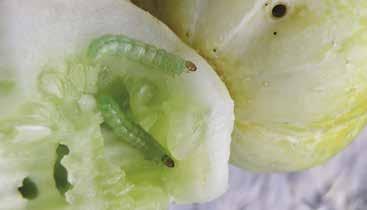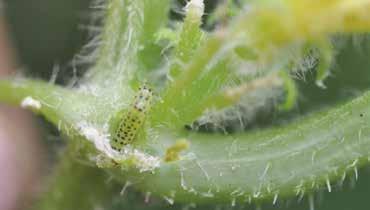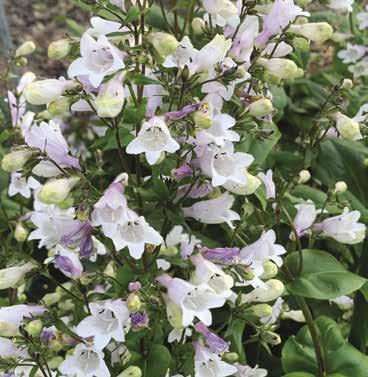
4 minute read
How’s Your Garden?
SIMPLE TIMES THE CO-OP PANTRY
BY LOIS TRIGG CHAPLIN
Advertisement
Pickleworm

thuringiensis) to kill the caterpillar larvae before they enter the vines or fruit because once inside, they are
Gardeners who love homegrown cucumbers don’t impossible to control. However, they don’t seem to like like pickleworms. This sneaky caterpillar gets into the butternut and Hubbard squashes. Another trick is to vines and carves through the interior of the fruit. To plant a self-pollinating cucumber such as Diva and salvage what is left, gardeners have learned to “cut cover it with insect netting; excluding the bees won’t around” the damage, but if the goal is to make whole be an issue with a self-pollinating type. pickles, this pest is a spoiler. The adult moth flies in from Florida during late spring or early summer, work- Tomatoes Need Extra Potassium ing its way northward while laying eggs on the leaves of cucumbers, melons and squash. A trick for avoid- As tomato plants grow and begin blooming, their ing the pests on pickling cucumbers is to get in a good need for potassium increases. A lack of needed poharvest before they arrive. This means starting plants tassium makes leaves even more susceptible to the ahead of time in a cold frame or greenhouse then many diseases that plague tomatoes in our warm, transplanting them into the garden as early as the humid climate. Spraying the foliage with a soluble weather allows. At this point in the season, gardeners potassium fertilizer such as kelp extract or a liquid tocan protect plants with regular sprays of Bt (Bacillus mato food with adequate potassium provides plants with a quick, easily-available source. Adequate potassium is necessary for overall health of the plant and good tomato flavor.
Young pickleworm

By now the leafy, cool-season crops such as arugula, endive, collards, lettuce, cilantro and mustard that overwintered are producing seed if they are still in the garden. Leave them and see what happens. Often, these plants will reseed next cool season if the seeds aren’t covered too deeply in mulch. Mulch with your favorite organic material now and don’t mulch again. Look for volunteer seedlings to sprout in the fall.
Penstemon is a Tough Perennial
Flowers are an essential part of a complete garden – they are pretty, often smell good and many attract beneficial insects. Perennial flowers are especially nice because they come back year after year and may be shared with others when the plants need dividing. A new one in our garden is a white penstemon that bears upright stems of bell-shaped blooms in late spring. The many species of penstemon native to the U.S. support native insects and hummingbirds. Look for penstemon
in white and various shades of pink. In a sunny spot with good drainage and not-too-rich soil, penstemon will grow and provide seedlings and clumps to share with other gardeners. It is also drought tolerant.

Penstemon is a tough perennial for late spring.
Dahlias Make the Cut
When I was a first-grader, my aunt cut a giant dinnerplate dahlia blossom for me to take to my teacher. It was bigger than my face. I’ve loved them ever since. The giant types, over 10 inches in diameter, are most impressive, but truly all dahlias impress with their perfect form and unlimited colors. Most are sold in bags of one or more tubers with a picture of the flower as a shopping guide. Tubers planted now will sprout quickly and bloom in late summer. Plants form a main central stalk four feet tall or more, so they need a stake or tomato cage for future support when planting. Dahlia tubers don’t overwinter well. They’ll need digging to save for next year. By the time frost arrives, the tuber will have multiplied to yield three to six tubers for planting next year.

Dahlias in a vase
Some Herbs Don’t Like Summer
Heat and humidity often ruin herbs from the hot, sunny, but dry Mediterranean climate, especially those with pubescent leaves such as lavender and sage. The slightly fuzzy leaves trap moisture that makes them more susceptible to fungal diseases causing the leaves to turn brown and die. Gardeners call this “melting out.” Now is the time to practice prevention by thinning lavender and sage plants that have been growing well all winter. Now through September are the hardest months on these plants. Shape the plant by pruning away enough stems so that the center of the plant is open to allow good air circulation and sunshine to reach the leaves. Growing them in a container also helps by getting them away from the moist ground.










